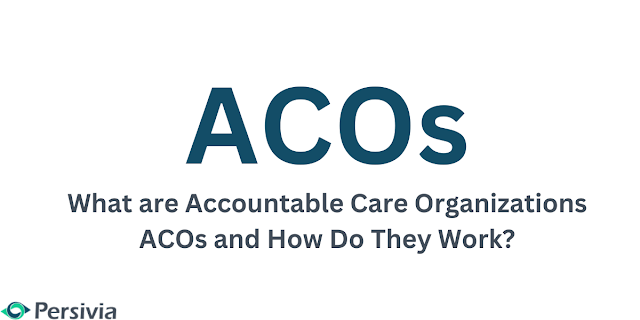What are Accountable Care Organizations ACOs and How Do They Work?
Today, Accountable
Care Organizations ACOs
have emerged as a pivotal model for delivering efficient and cost-effective
treatment. It originated under the Medicare Shared Savings Program, an integral
part of the Affordable Care Act (ACA) of 2010. Initially designed to support
Medicare participants, these organizations have expanded to encompass private
payer networks.
The ACO Structure
Structured around a patient’s primary care physician (PCP), ACOs extend their reach to include hospitals, pharmacies, specialists, and various service providers. This holistic approach aims to streamline healthcare services and eliminate redundancies for Medicare patients.
Evolution Beyond Medicare
What began as a Medicare-focused initiative has now transcended its initial boundaries. They have embraced private payer networks and platforms like ACO Reach while retaining the fee-for-service payment model of Medicare, introducing a set of incentives to promote efficient care.
Incentivizing Accountable Care Organizations ACOs
The ACA incentive matrix plays a pivotal role in counteracting the rising costs associated with traditional Medicare fee-for-service models. ACO providers are subject to quantitative benchmarks across categories like Patient/Caregiver Experience, Care Coordination/Patient Safety, Preventative Health, and At-Risk Population.
The ACA Incentive Matrix
Under this matrix, the Electronic Health Record (EHR) system collects data on specific criteria in each category. Providers are then ranked against their peers, with rewards in the form of increased reimbursement rates for high performance.
Drawbacks and Criticisms
Despite their merits, these organizations face criticism. Concerns include the potential consolidation among providers, leading to higher costs as a smaller number of health systems hold greater negotiating power over insurers.
Provider Consolidation Concerns
Early research indicates some provider consolidation, driven partly by the costs of complying with the reporting system. Critics worry this consolidation could limit options for consumers.
Consumer Implications
These organizations aim to eliminate the structural obstacles of the HMO system but may pose a risk of consumers feeling trapped in undesirable networks. Due to consolidation, healthcare economists express concerns about potential limitations on consumer choices.
ACO in Private Payer Networks
The integration of ACO into private payer networks marks a significant shift. As these organizations expand their reach, they contribute to reshaping the healthcare landscape and influencing the future of patient care through their ACO Reach system.
ACO Impact on Healthcare Costs
An analysis of
Accountable Care Organizations ACOs impact on healthcare costs reveals both
positive and negative aspects. While these aim to reduce unnecessary
expenditures, concerns persist about potential cost increases resulting from
provider consolidation.
Want to learn more? Get in touch with Persivia and get going!


.png)
Comments
Post a Comment
Please do not enter any spam link in the comment box